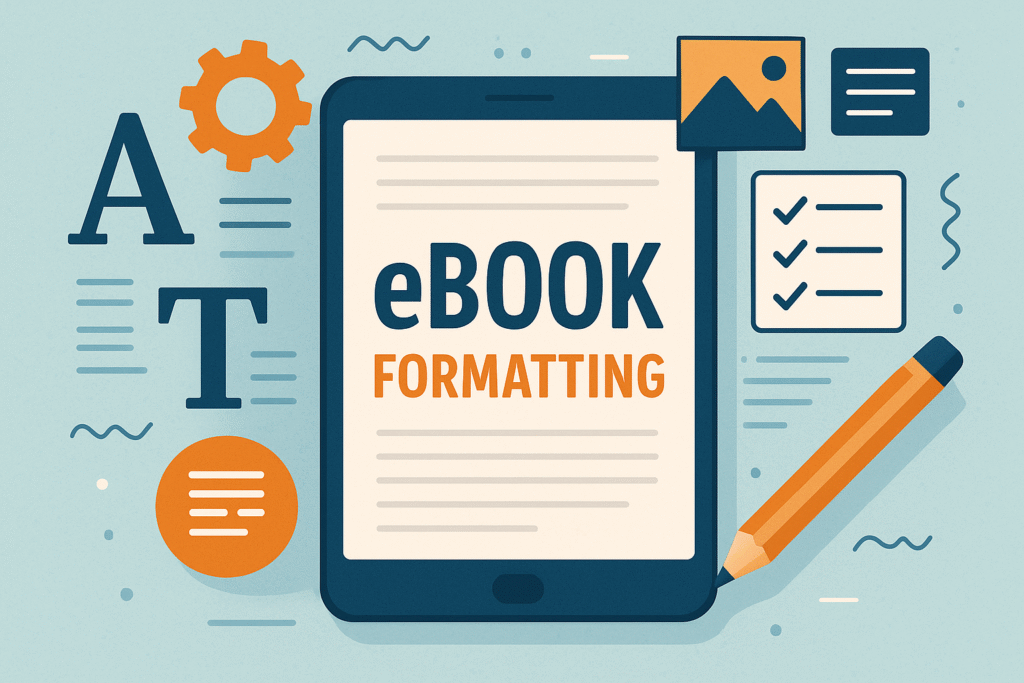Introduction: discussion of why book formatting is an important issue to authors.
Imagine picking a book with raggedy edges, odd fonts or weird line breaks. Even when the story is a masterpiece, you are not able to enjoy it because of its bad presentation. It is why the process of formatting books is one of the most crucial steps in the publishing process.
The format of a book does not necessarily concern making a text look good. It makes it professionally readable, publishing platform compliant, and credible to readers. Self-publishing on Amazon KDP, sending to a number of publishers, or releasing an eBook globally, the way your book is formatted has a direct bearing on its success.
You will find all details about professional book formatting, tools you may use, errors to avoid, and how Olive Publishers will help you produce a perfect, market ready book in this guide.
Learning the Ropes of Book Formatting.
What is Book Formatting?
The book formatting involves transforming a manuscript into a final printing by arranging fonts, spacing between lines, margins, and images and general design. It changes a piece of raw Word or Google documents into a professional book that can be printed or published using electronic media.
Difference between Formatting and Editing.
Formatting is often confused with editing by many authors. Editing enhances the content, grammar, sentence flow and clarity; whereas formatting enhances the presentation, page layout, headings and readability. They are both necessary yet they are used in different functions.
Professional Formatting and Publishing.
The importance of formatting properly to increase the reader experience.
A properly laid out book is comfortable to the eyes. Clearly defined margins, the same fonts and well aligned paragraphs allow the reader to concentrate on the narrative rather than being lost in the errors made.
Guide to the Formatting in various platforms.
Various platforms such as Amazon Kindle Direct Publishing (KDP), IngramSpark and Apple Books each have some requirements. Poorly formatted books may be rejected, delayed or even negatively reviewed.
Basic Book Formatting Elements.
- Fonts and Typography: Serif fonts such as Times New Roman are ideal to use in print, whereas sans-serif fonts such as Arial have better performance in eBooks.
- Line Spacing, Margins, and Alignment Standard spacing is 1.15 or 1.5, with justified alignment to create a clean look.
- Chapter Headings and Subheadings: They must be clear and consistent: they are generally larger and bold.
- Page Numbers, Headers, and Footers: Assists the navigation and makes it look professional.
- Images, Illustrations, and Tables: These should be of a high resolution (300 DPI to print) so that they are not blurred.
Print vs. eBook Book Formatting.
Key Differences
- Books that are printed follow a fixed layout.
- The eBooks have to be scalable to different screen sizes hence formatting should be versatile.
eBook-Specific Challenges
- Kindle and EPUB files must be coded to use font scaling and images.
- Unproper formatting will result in broken formats across devices.
Introduction to Formatting with print.
- Select the proper trim size (e.g., 6 x 9).
- Add bleed margins to images.
- Choose quality type of paper (matte or glossy).
Self-publishing Software and Book Formatting Equipment.
- Microsoft Word: Excellent when one is a beginner, but restrictive.
- Adobe InDesign: Professional formatting standard.
- Scrivener: Ideal to those writers who prefer to plan out complicated projects.
- Calibre & Reedsy Book Editor: Free or cheap self-publishing author tools.
The Importance of Hiring a book formatting professional.
- Spares you time and aggravation.
- Insures quality of professionalism that is distinct.
- Eliminates platform rejection because of technical failures.
- Assures that eBooks appear good on devices ( Kindle, Nook, iPad ).
Top Book Format Problems to Steer Clear of.
- Too many dissimilar fonts.
- Irregular distance between chapters.
- To leave widows (single lines at top of pages) and orphans (lines left at bottom) out.
- Images with low definition and which appear pixelated when printed.
How to layout your book in a professional manner.
- Clean up your paper (cut doublespaces, center headings).
- Set trim size and margins.
- Select font type and size (normally 11-12 pt).
- Add page numbers, footers and headers.
- Add pictures and bill balance.
- Turn file into PDF to print or eBooks into EPUB/MOBI.
- Proofread after formatting, to make sure there were no mistakes crept in.
Effects of Formatting on Marketing and Sales.
With a poorly structured book, no matter how good it is, you will get a bad review. Conversely, a clean layout enhances trust, retention, and word of mouth referrals to readers. Formatting is not technical only–it is an element of your author brand.
Olive Publishers: Your Professional book formatting partner.
Olive Publishers offer complete solutions: editing and formatting of books to publishing and digital marketing of book publishers. We make your book look good–fiction, non-fiction, academic.
We specialize in:
- Print and eBook formatting
- Design and illustration of cover.
- Editing and proofreading
- Publication and distribution on Amazon and others.
Conclusion: Prepare Your Book to Perform Well by Formatting it.
The art of formatting a book is not about aesthetics but rather the production of a professional, readable and marketable product. Be it using tools yourself or you hire someone such as Olive Publishers, proper formatting makes your book stand out in an already flooded market.
It is to be remembered that readers will overlook a bad plot, they will not overlook a bad book formatting. You spend money on good formatting and your book will shine.




